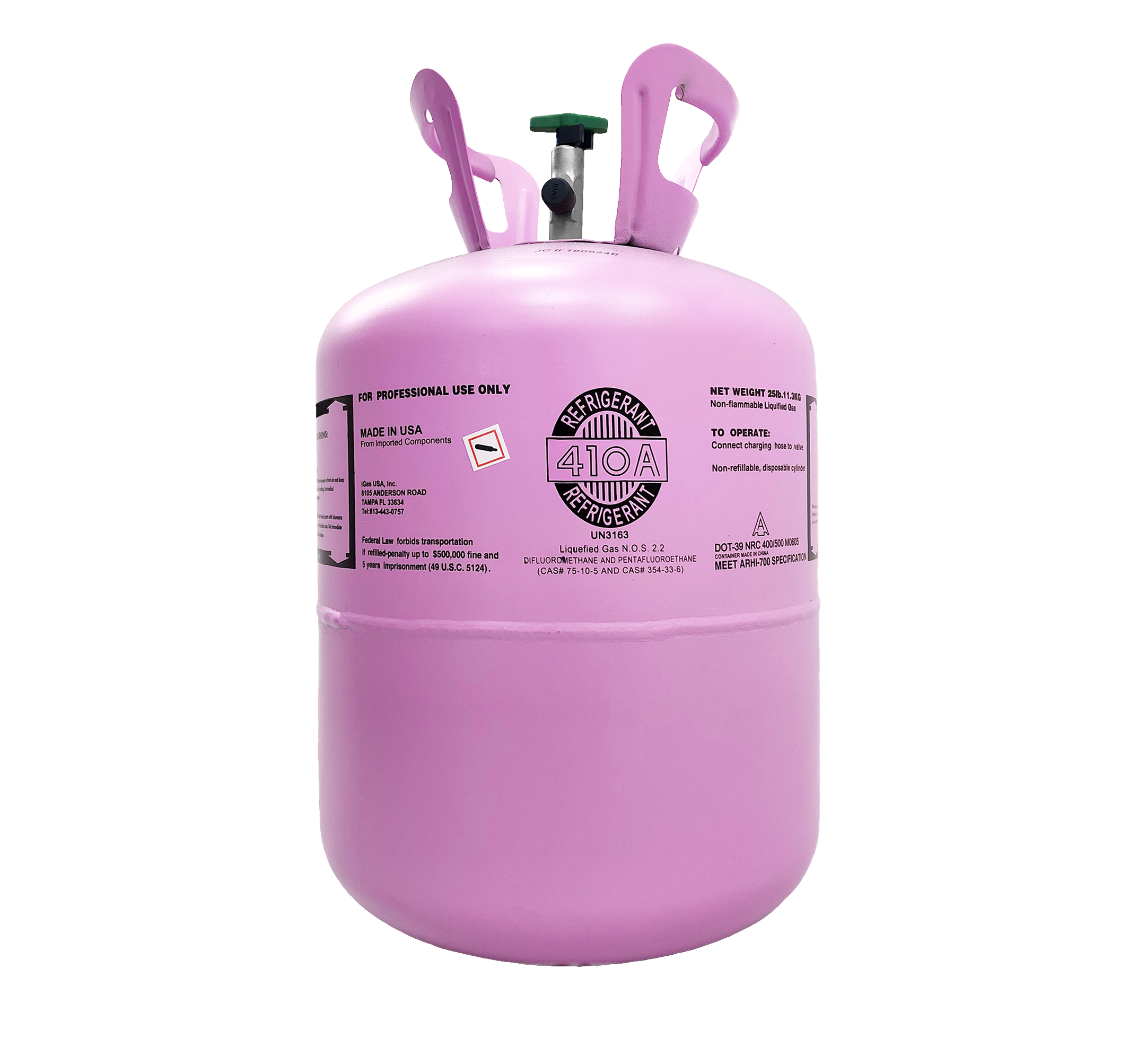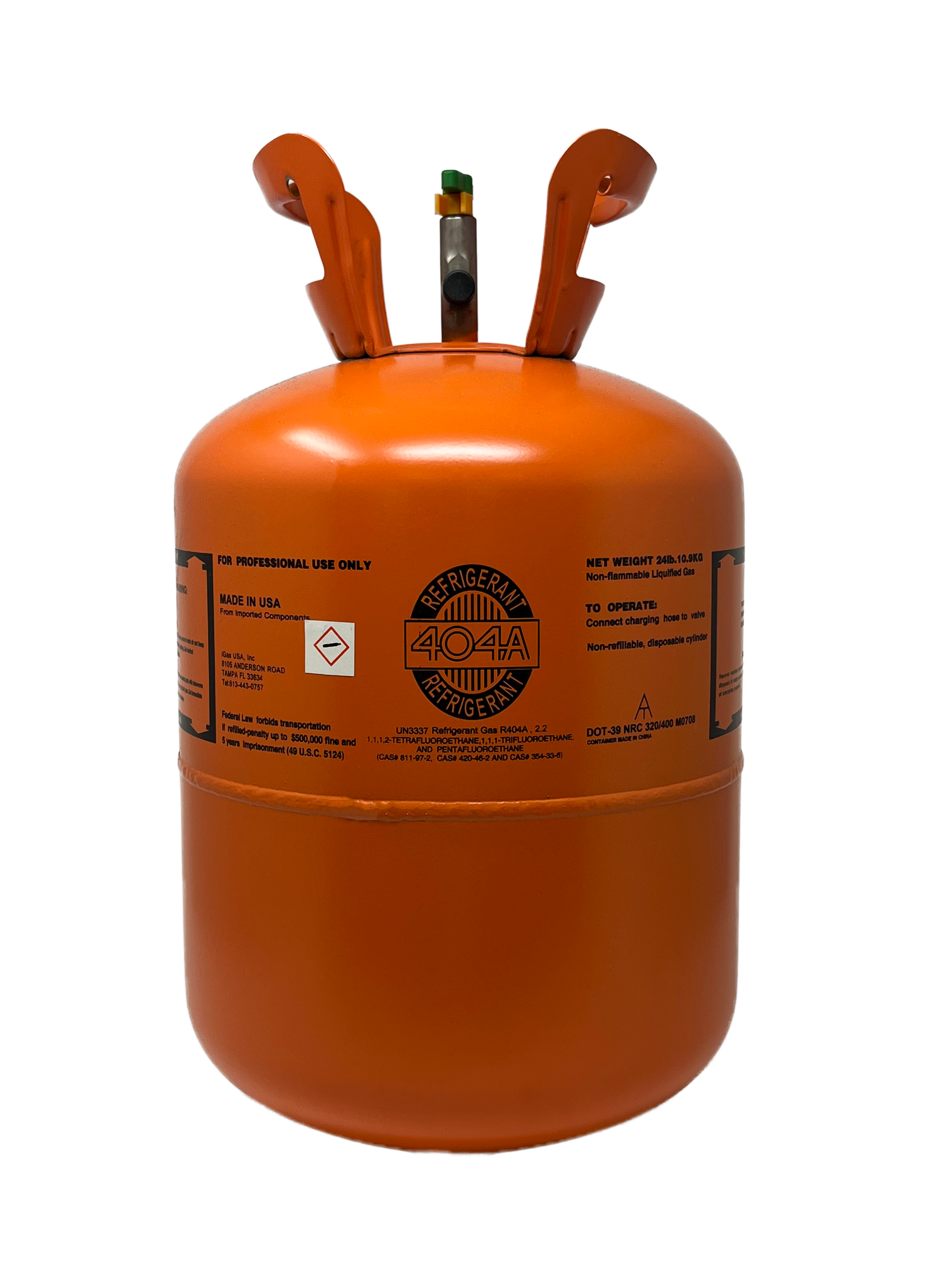
R-410A Refrigerant
R-410A is a blend of R-32 and R-125 that is 60% higher pressure than R-22 for air conditioning applications and should only be used in new equipment specifically designed to handle the pressure. Systems that are designed for R-410A will have smaller components to perform the same cooling job as R-22. R-410A will require POE lubricants. Retrofitting R-22 equipment is not recommended under any circumstances.
R-410A is a blend of R-32 and R-125 that is 60% higher pressure than R-22 for air conditioning applications and should only be used in new equipment specifically designed to handle the pressure. Systems that are designed for R-410A will have smaller components to perform the same cooling job as R-22. R-410A will require POE lubricants. Retrofitting R-22 equipment is not recommended under any circumstances.
R-410A has replaced R-22 as the preferred refrigerant for use in residential and light commercial air-conditioning and heat pump systems. It has a higher cooling capacity than R-22 and is significantly higher in pressure. R-410A was not designed to retrofit existing R22 systems and should be used only in systems specifically designed for R-410A. It is non toxic and non flammable meeting the highest A1 Classification.
| Chemical Formula | Blend |
| Chemical Name | R-125(50%), R-32(50%) |
| Chemical Formula | Blend Refrigerant |
| Type | HFC Refrigeration |
| Oils | Polyolester |
| (POE) Net Weight | 25 lbs. / 100 lbs. / 850 lbs. / 1,450 lbs. |
| Molecular Weight | 72.6 |
| Boiling Point | (1 atm, °F): -61 |
| Critical Pressure | (psia): 691.8 |
| Critical Temperature | (°F): 158.3 |
| Critical Density | (lb./ft³): 34.5 |
| Liquid Density | (70°F lb/ft³): 67.74 |
| Vapor Density | (bp, lb./ft³): 0.261 |


